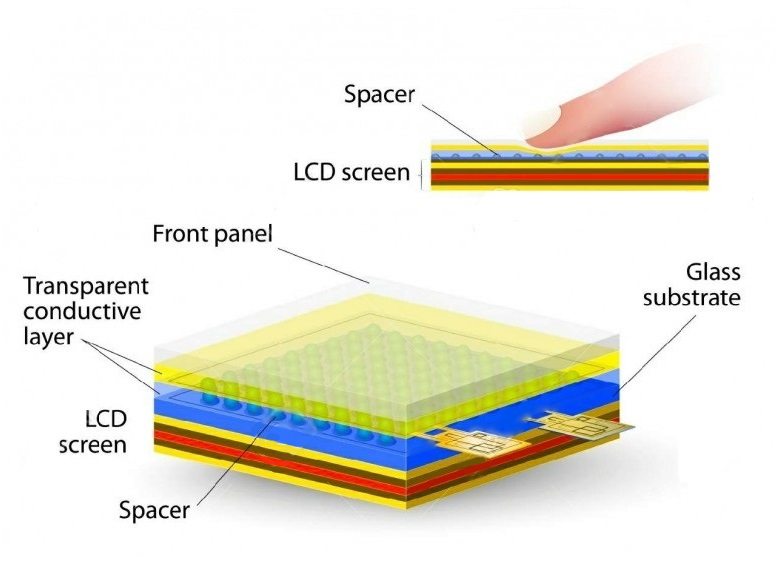Resistive Touch Screen
The resistive touch screen resists your touch literally and if you press harder you can feel the screen bent slightly. This is what makes the resistive touch work. There are two layers in the resistive touch, the resistive layer and the conducting layer. These are separated by tiny dots called spacers. The electric current flows through the conductive layer at all times but when you touch the screen i.e. resistive layer, it comes in contact with the conducting layer. Thus the electric current changes at that point and the function corresponding to that point is carried out.
Capacitive Touch Screen
The capacitive touch screen does not use the pressure of your finger for the flow of electricity. Instead, they work with anything that holds an electric charge, including human skin. They are made from materials like copper and indium tin oxide that hold electric charges in an electrostatic grid of wire each smaller than a human hair. There’s a glass substrate,a conductive layer , a protector, a controller and electrodes at the corners. The electrodes apply a low voltage to the conductive layer to form a electrostatic field. When a finger hits the screen, a tiny electrostatic charge is transferred to the field that completes the circuit. A voltage drop is created at that point. The location of the voltage drop is reported by the controller. And this is how a capacitive touchscreen works.


